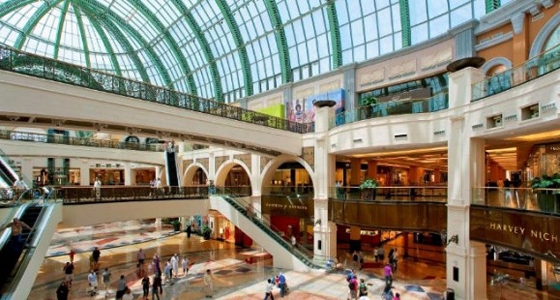Rising demand and a recovering economy are driving growth in Dubai’s retail sector, with a sharp increase in new mall space suggesting that it is beginning to shake off the doldrums of the global economic crisis of 2009.
Over the past decade Dubai has become the Middle East’s chief retail center. The emirate is home to one of the largest malls in the world and boasts a reputation as a prime shopping destination among well-heeled tourists.
However, expansion has slowed, and there has not been a significant increase in mall-based retail space during the past three years, with stocks rising from 2.65m sq meters in 2010 to the current 2.8m. In part this could reflect the weaker economic climate following the downturn of 2009, which had a decided impact on the sector, with many shops closing their doors or scaling back operations.
Now, with Dubai’s economy rebounding, projects previously put on hold have been reactivated and new developments are being put into the pipeline. A recent report by property consultancy Jones Lang LaSalle (JLL) said some 371,000 sq meters of new retail space would be rolled out over the next two years. The flow through the development pipeline is expected to become stronger throughout the second half of the decade, as new projects are completed and some existing retail spaces expand to maintain their competitive edge.
Rents rising in high demand malls
Though there has been an above-inflation increase in rents in prime locations, rents in less popular or older retail space have remained stable or fallen, according to data from JLL.
Ajai Kumar Dayal, CEO of Tridayle Consult, said demand remained strong in high-profile malls, with occupancy rates at near maximum levels. “If you are looking at the major malls in the city, rentals seem to be going up as there is still a lot of demand for locations and no empty spaces,” he told the Gulf News in early September.
Mat Green, the head of research for CBRE in the UAE, said a move away from older malls, or those with falling customer numbers, was to be expected. “As more destination malls are delivered, retailers go to where there is high potential of sales and footfall,” Green said in mid-September.
With a steady stream of new retail space set to come onto the market over the next few years, existing mall operators are feeling the push to renew, revamp and expand to keep at the front of the pack. In early September Majid Al Futtaim announced it would be spending $273m to expand its Mall of the Emirates, while property developer Emaar Properties has unveiled plans to increase the floor area of its Dubai Mall by 93,000 sq meters.
Market far from saturation point
Though there have been some concerns that Dubai’s retail market is becoming overstocked, Iyad Malas, the CEO of developer Majid Al Futtaim Holding, does not agree. “The market still hasn’t reached a point of saturation, which is evidenced by the healthy and natural inflow of brands to the market and shopping centers,” Malas told OBG.
Dubai holds certain advantages for retailers, with a young population, solid household consumption levels and a rapidly expanding tourism industry. The emirate is also seen by many overseas retailers as an indicator of the sector’s well-being in the broader region.
“Retailers continue to expand into this region, often using Dubai as their launch platform into other markets such as Riyadh, Jeddah and Doha,” said Green. “According to CBRE research, 25 new retailers opened stores in Dubai last year.”
This is good news for mall developers, although with a number of projects set to come onto the market in the near future, competition to win the attention of retailers could be fierce.
Oxford Business Group
19 October























































